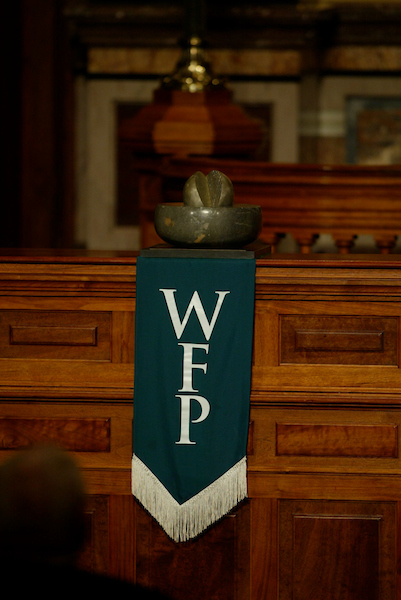History of IPIA and International Activities
1960-1970
By the early 1960s, international activities in the College had expanded considerably, and it became clear that administrative oversight was needed. In response, the office of International Programs in Agriculture (IPIA) was established in 1965 by IPIA's first director and Associate Dean for International Programs, D. Woods Thomas. For the first few decades of IPIA's existence, it was the only unit on the Purdue campus with an explicit mandate to pursue international engagement. In the 1970s, all of Purdue's nascent study abroad programs were managed out of IPIA because it was the only "international" office on campus. IPIA thus served as a model that was later used to set up the university-wide International Programs office in the early 1990s (of which Woods Thomas was the first Dean) as well as the office of Global Engineering Programs and Partnerships.
IPIA's initial mandate was to better coordinate the expanding and deepening relationship between Purdue's College of Agriculture and the Federal University of Viçosa (UFV) in the State of Minas Gerais in central Brazil. Purdue's work in Brazil helped foster the establishment of Embrapa (Empressa Brazileira de Pesquiza Agropecuaria, i.e. the Brazilian Agricultural Research Corporation), on April 26, 1973. In the 1950s and 1960s, numerous members of Purdue's faculty stayed in Brazil for several years to strengthen the program at Viçosa. Those that went include Ellsworth Christmas (former Professor of Agronomy), Jules Janick (Professor of Horticulture), Doug Knudson (Professor of Forestry), and Dean Thomas himself. At the close of the program, UFV had been transformed from a rural vocational school to one of the finest universities in South America. Purdue's early work at Viçosa was documented in detail by Purdue alumna Adriela Fernández in her 1991 Ph.D. dissertation. Over time, Purdue's efforts came to be widely regarded as a premier example of U.S. foreign aid focused on agricultural development. Unfortunately, as the 1970s unfolded, U.S. government support for institution building began to wane. Despite a decrease in available funding, however, Dean Thomas continued to promote projects between Purdue and Viçosa. These resulted in numerous exchanges by students, professors, and researchers. To this day, IPIA maintains strong relationships with Viçosa and other Brazilian institutions, promoting student and faculty exchange and collaboration.

The 1970s were also an important period for other work in the College that would have widespread global impact. In the early 1970s, Phil Nelson (Professor Emeritus of Food Science) traveled to India as part of a National Academy of Sciences team sent to study the problem of food spoilage. This led to his investigations into methods to preserve food, including heat sterilization and aseptic storage. Prof. Nelson's innovations greatly enhanced the effectiveness of preserving fresh foods, especially in developing countries. Global recognition of this work earned him the 2007 World Food Prize. His would be the first of three of these so-called "Nobel Prizes for Agriculture" to be awarded to Purdue faculty or alumni.
Under the leadership of Wilford (Bill) Morris (former Professor of Agricultural Economics), the West Africa Project was funded by USAID in the 1970s to conduct sorghum and millet research in Burkina Faso, the Gambia, Mali, Niger and Senegal. Eighteen returning Peace Corps volunteers who had worked in those countries were admitted for graduate studies were stationed in those countries. Long-time staff member Katy Ibrahim played a key role in this project and many others in subsequent decades. Charles "Chuck" L. Rhykerd, who served on the faculty of the Department of Agronomy from 1960-1996, was also instrumental during these years in expanding the college's international footprint through his work with students from Africa, Europe and Latin America.
In 1979, T. Kelley White served briefly as Interim Director of IPIA while Woods Thomas was on sabbatical in Washington, DC, working with USAID. During this period the College further expanded its international efforts with the International Sorghum and Millet (INTSORMIL) Project, which was managed by the University of Nebraska. INTSORMIL was one of the early USAID Collaborative Research Support Programs (CRSPs). It began with the goal of developing technologies that would assist with growing human capacity and strengthening national research institutions in East Africa. The Horn of Africa sub-project, led by Gebisa Ejeta (Distinguished Professor of Agronomy), focused on crop improvement in Ethiopia, Eritrea, Kenya and Uganda, and was a primary initiative of INTSORMIL. Other sub-projects were carried out in Burkina Faso, Côte d'Ivoire, India, Mali, Mexico, Mozambique, Niger, Puerto Rico, Senegal, Tanzania, and Zimbabwe. The main accomplishments of INTSORMIL, which ended in 2010, included a comprehensive survey of drought tolerant technologies, the development of improved hybrids of sorghum and millet with higher drought tolerance and grain quality for Ethiopia and Kenya, the distribution of Striga-resistant sorghum in Ethiopia and Tanzania, the creation of a regional database for sorghum, and the completion of a comprehensive survey of Striga management plans in the region. Among the truly significant achievements of INTSORMIL was the release of a Striga-resistant sorghum variety adapted for production in East Africa. This life-saving innovation to combat the naturally-occurring parasitic plant resulted from work done by Gebisa and would ultimately lead to his being awarded the 2009 World Food Prize, Purdue's second. In addition to the INTSORMIL CRSP, Purdue researchers contributed to a number of other CRSPs during this period, including the Aquaculture CRSP, the Integrated Pest Management (IPM) CRSP, the Peanut CRSP, the Soils CRSP, the Sustainable Agriculture and Natural Resources Management (SANREM) CRSP, and the AMA BASIS CRSP. The CRSPs were the predecessors to today's USAID Feed the Future Innovation Labs, and focused on three areas: (i) building human and institutional capacity in partner universities (both in host countries and in the United States); (ii) leading research efforts to contribute to development in host countries; and (iii) strengthening scientific knowledge. The CRSPs were an important model for internationalization of the research dimension of the Land-grant mission and Purdue played a central role in their creation and evolution.
